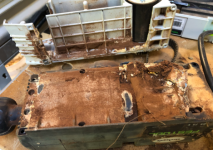Hi all, new to this forum and hoping to work out if what I’m experiencing is normal.
I have the BS 75 belt sander hooked up to my CT 36 E AC at full power vacuum and I’m noticing that there is a lot of sawdust that doesn’t get vacuumed up.
I’m getting by with swapping the vacuum between the sander and the vacuum attachment every minute or so but it is a lot of work to do this. I’m hoping this is not the norm and that perhaps I’m missing something?
Appreciate if anyone can share their experience - hoping to hear that the norm is that saw dust is all vacuumed up (I have 90sq meters of floorboards to sand through and work up through grits so finger crossed)
Thanks in advanced
I have the BS 75 belt sander hooked up to my CT 36 E AC at full power vacuum and I’m noticing that there is a lot of sawdust that doesn’t get vacuumed up.
I’m getting by with swapping the vacuum between the sander and the vacuum attachment every minute or so but it is a lot of work to do this. I’m hoping this is not the norm and that perhaps I’m missing something?
Appreciate if anyone can share their experience - hoping to hear that the norm is that saw dust is all vacuumed up (I have 90sq meters of floorboards to sand through and work up through grits so finger crossed)
Thanks in advanced

